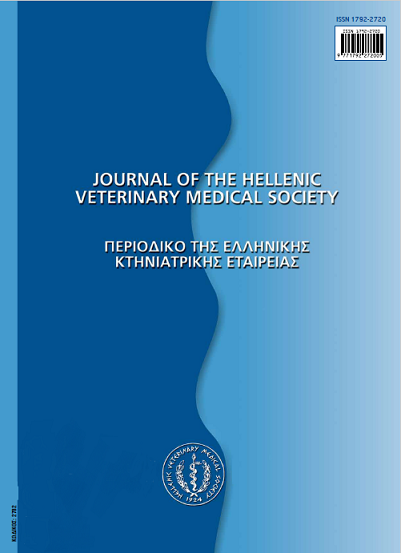Cryptorchidism in the Karagouniko breed of sheep and its economic consequences
Resumen
The aim of the present study was to evaluate the frequency of cryptorchidism in the Karagouniko breed of sheep. The animals used were derived from the sheep flock at the Agricultural Research Station of Palamas (Karditsa), consisting of 500 breeding ewes and 15 rams of the Karagouniko breed and from two hundred and seven flocks of Karagouniko breed genetic nucleus. In addition 14.107 carcasses of Karagouniko male lambs, slaughtered at the abattoir of Karditsa and the size and weight of testicles and epididymides of 18 cryptorchidic and 7 normal lambs were examined. Finally, the economic impact of this defect was also evaluated. The results showed that cryptorchidism is a defect with a high frequency (23.81% of male lambs, P<0.001) in the Karagouniko breed and it is associated with polledness. The frequency of cryptorchidism is increased in sheep flocks where inbreeding is applied. Cryptorchidism was found to be bilateral or unilateral (20:1 respectively, P<0.001). The most common type of unilateral defect was found to be the right one (10:1, P<0.001). Bilateral was of abdominal or inguinal type(400:l,P<0.001). Testicular aplasia was found to be rare (0.02% of total examined male lambs or 0.09% of cryptorchid ones). The weight of "hidden" testicles and epididymides was lower than that of normal (-14.06% and -22.99% respectively, P<0.001). However, until the age of 4 months, there was no difference in weight between cryptorchidic and normal lambs. Males with bilateral cryptorhidism were not able to produce semen. Cryptorchidism causes a considerable decrease in sheep breeders' income (P<0.001), as it deprives them of the opportunity to sell male lambs as breeding animals at the higher than usual price. It is concluded that the high frequency of cryptorchidism in the Karagouniko sheep significantly retards the genetic improvement of the breed and decreases the farmer's income.
Article Details
- Cómo citar
-
LAINAS (Θ. ΛΑΪΝΑΣ) T., & DELIGIANNIS (Κ. ΔΕΛΗΓΙΑΝΝΗΣ) K. (2018). Cryptorchidism in the Karagouniko breed of sheep and its economic consequences. Journal of the Hellenic Veterinary Medical Society, 53(4), 310–324. https://doi.org/10.12681/jhvms.15387
- Número
- Vol. 53 Núm. 4 (2002)
- Sección
- Research Articles

Esta obra está bajo una licencia internacional Creative Commons Atribución-NoComercial 4.0.
Authors who publish with this journal agree to the following terms:
· Authors retain copyright and grant the journal right of first publication with the work simultaneously licensed under a Creative Commons Attribution Non-Commercial License that allows others to share the work with an acknowledgement of the work's authorship and initial publication in this journal.
· Authors are able to enter into separate, additional contractual arrangements for the non-exclusive distribution of the journal's published version of the work (e.g. post it to an institutional repository or publish it in a book), with an acknowledgement of its initial publication in this journal.
· Authors are permitted and encouraged to post their work online (preferably in institutional repositories or on their website) prior to and during the submission process, as it can lead to productive exchanges, as well as earlier and greater citation of published work.





